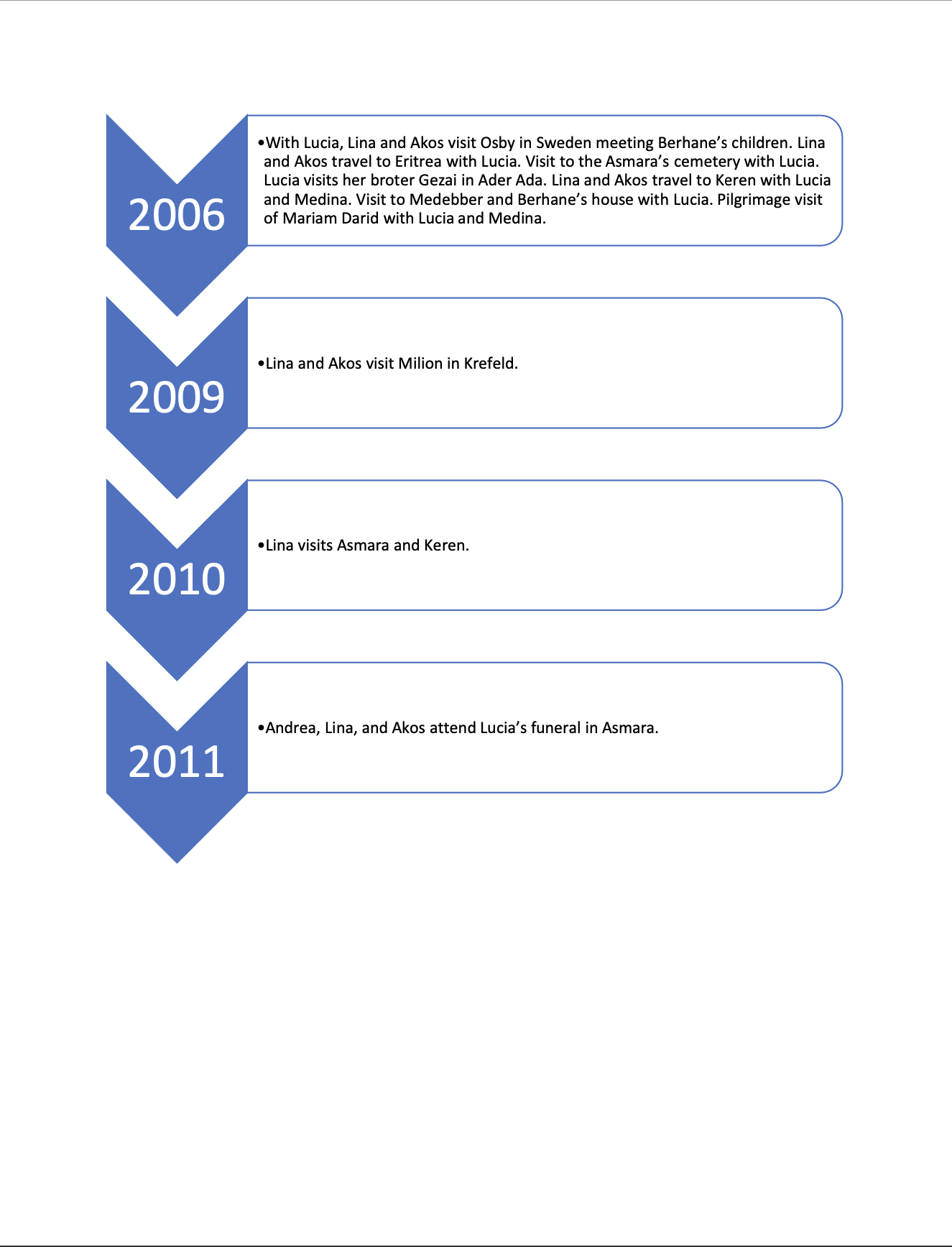Silvio Fruzzetti's final resting place. Lucia his wife, and daughter Lina visit his grave. Most graves in this section date back to Italian colonial times, the architecture and design are recognizably Italian, distinct from the later graves in the cemetery. Notable are the inscriptions, names, and the more elaborate mausoleums.
Visits and conversations started in Carrara continue in Asmara, Eritrea.
In the background are colonial histories and policies, the role of fascism, Italian immigration, road/rail/public works, creation of a unique modern city to benefit the Italian homeland. The rise of separate identity among the local people, the position of Italians who married Eritreans and stayed. Ethiopian imperial designs and the subsequent 30-year liberation struggle culminating in Eritrean independence in 1991.
 Download Transcript -
Download Transcript -

Intertwining Families
Kinship terminology of the Tigrinya family:
A Discussion of Family and Kinship in Eritrea: Indigenous Meanings
Blood, flesh and the construction of the person: ciga, dem and mobokol give meaning to a person.
An Eritrean family is one that rests on clearly culturally defined shared notions of identification. When a person is asked as to what the family means or who is a relative, their answers elicit shared criteria’s regarding a relative. A relative also shares distinct rights within the family. Additionally, we ask if the definition of a relative would match similar meaning to those who have lived more than forty years aboard? If not, what are the glaring differences when one addresses a displaced Eritrean person or a political refugee? Using Lucia Tesba Gilay, who passed away eleven years ago, I encountered multiple meanings according to how one behaves in the company of relatives and friends, or how these situations initiates and creates social spaces that situates the person accordingly. What is imposed on the children of Lucia Tesba Gilay, simply because by extension we are relatives and we need to follow the same expectations placed upon us as well.
Those from the diaspora quickly recognize how their relatives accept them or refuse to do so what are the ground rules for how one should behave. Take the example of Lucia Tesba Gilay who understands who she is and what is the root of her mobkol is; yet she has to activate some initial understanding and see what that implies.
Here we move away from emotion and feelings or the attachments to family. One often hers a sentence that makes you wonder to its true meaning. “Lucia is not my relative but she is a sister, our mother, one who helps us” is this what they expect of a non relative simply from a friend? How does friendship compete or contrast with a relative?
Tesba-Gilay family kinship chart